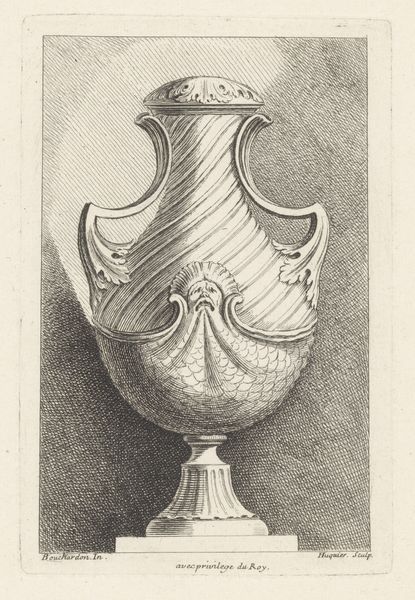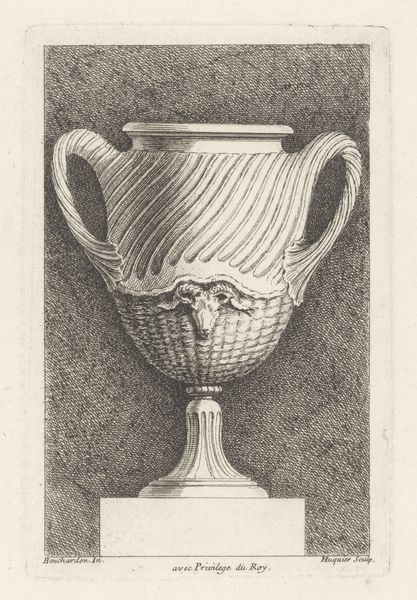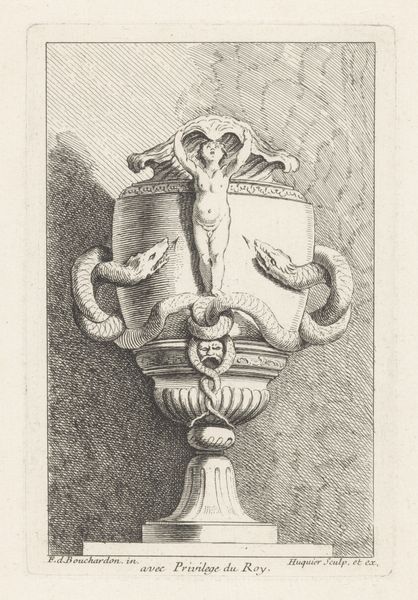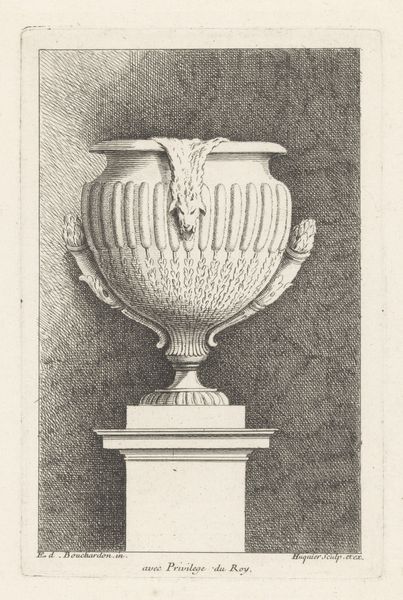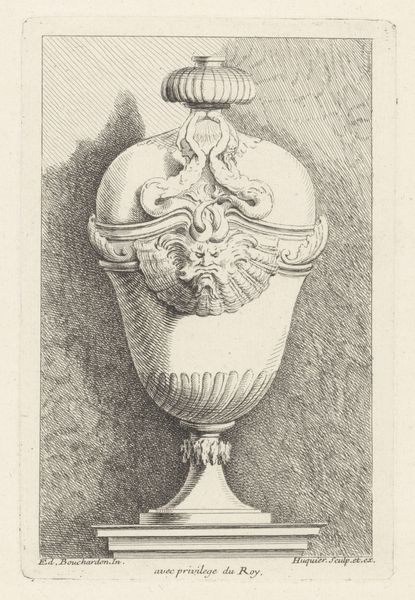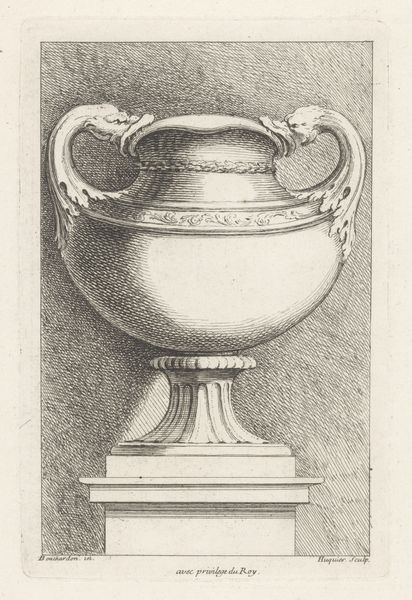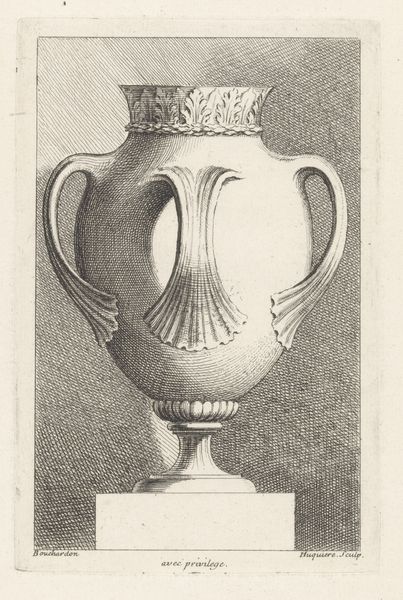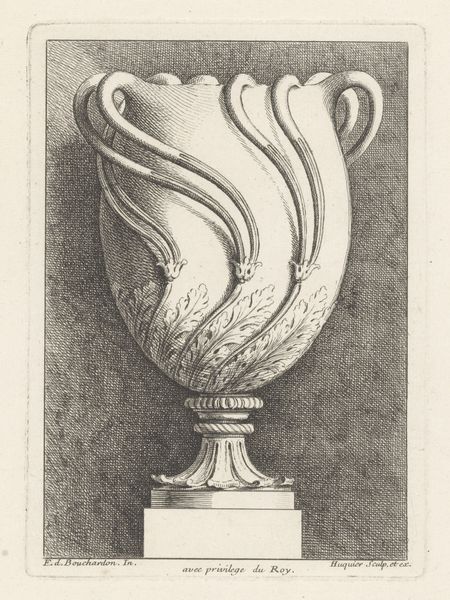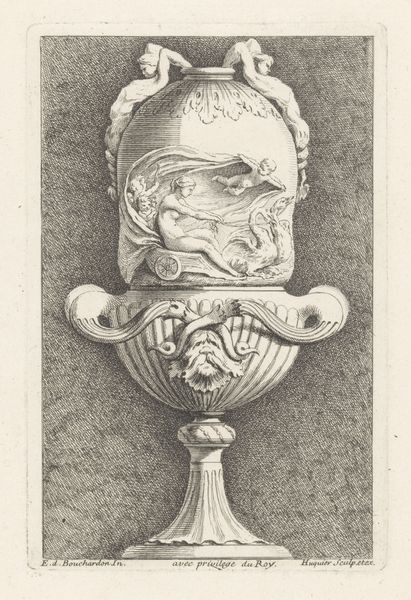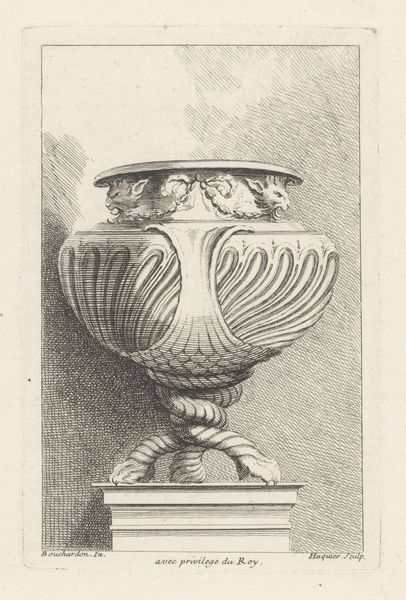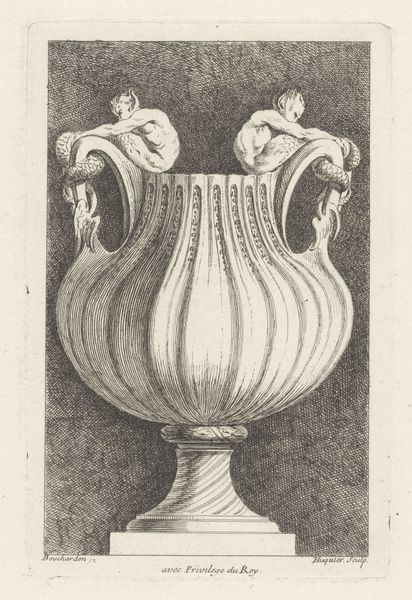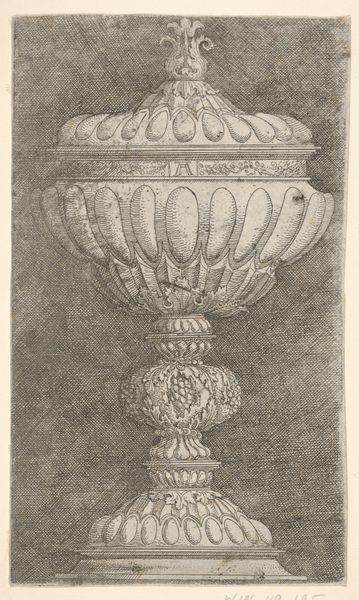
print, engraving
#
baroque
# print
#
old engraving style
#
personal sketchbook
#
pencil drawing
#
line
#
decorative-art
#
engraving
Dimensions: height 198 mm, width 130 mm
Copyright: Rijks Museum: Open Domain
Curator: Immediately, I am struck by its whimsical yet slightly unsettling character. The monochrome rendering and baroque sensibility offer such an interesting mix of playful and morbid aesthetics. Editor: Indeed. We’re looking at an engraving called "Vaas met meerminnen" created between 1729 and 1737. It's currently part of the Rijksmuseum collection and was conceived by Gabriel Huquier. What I find interesting is how this ostensibly decorative piece reveals a lot about 18th-century European power structures and the objectification inherent within them. Curator: Ah, you bring up a crucial point about objectification. Notice the mermaids acting merely as ornamental support on either side. In iconography, the mermaid motif can represent female allure, seduction, but also, in this context, subjugation. The vase itself is a container, isn't it? Editor: Exactly! These figures, part woman and part fish, literally uphold this symbol of aristocratic luxury. Consider who could afford to possess such a decorative item – likely, members of the elite class, demonstrating a societal hierarchy where labor and nature itself, including the female form, were commodified and constrained. Curator: I agree. And the mask at the base? Its exaggerated grimace, like a grotesque fountainhead, almost acts as a visual warning. Is it perhaps mocking the extravagance above or the power it upholds? I'm also drawn to the shell motif capping the form - how its protective qualities are reinterpreted to represent privilege, not necessarily care. Editor: That sense of warning feels resonant. Also, consider that many of these mythological depictions often tie back to colonial narratives. Seas and mythical beings became representative of newly “discovered” territories and the exploitation that accompanied their imperial pursuits. How these objects legitimize that domination is crucial to decode. Curator: So, an object intended for beauty and ostentatious display conceals far deeper, sometimes darker, meanings... fascinating. It serves as both a showcase and a cage. Editor: Absolutely, the image becomes less about décor and more about deconstructing the societal and historical dynamics at play within luxury.
Comments
No comments
Be the first to comment and join the conversation on the ultimate creative platform.
